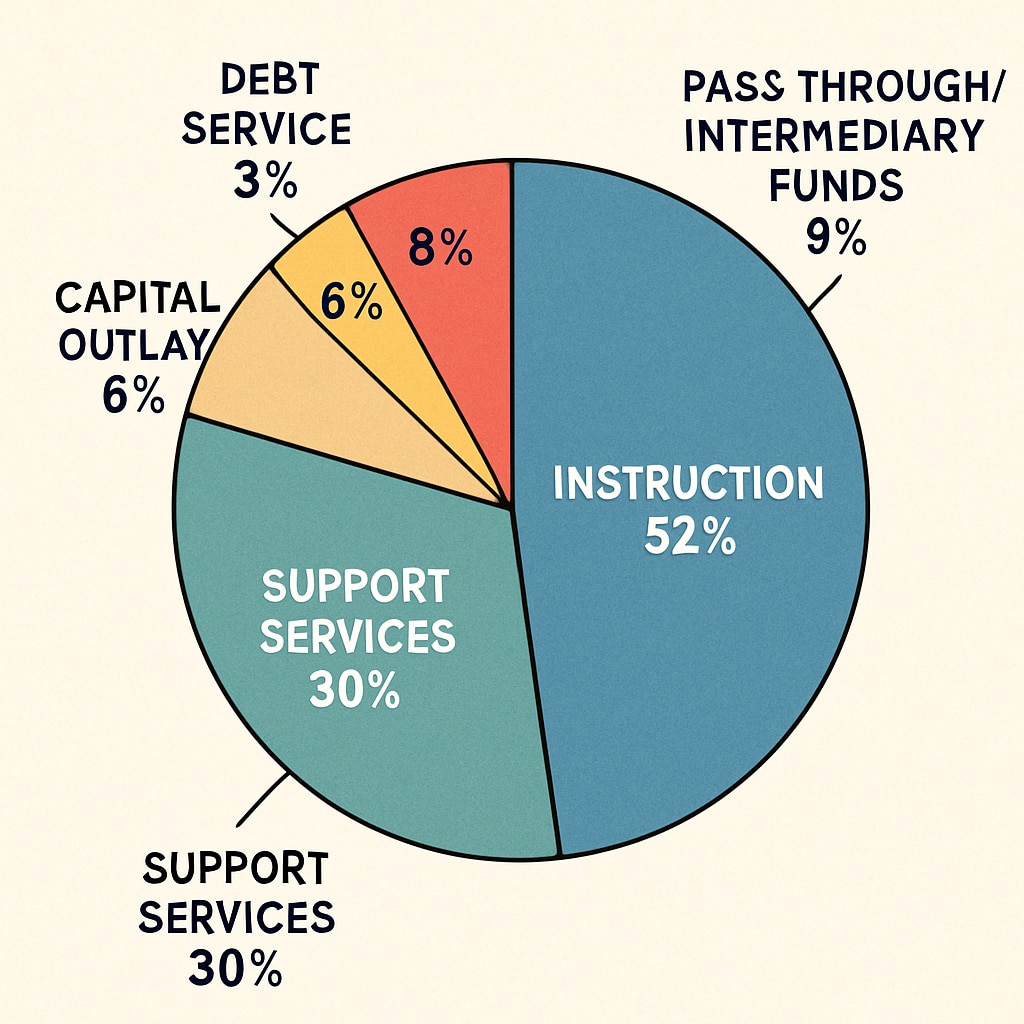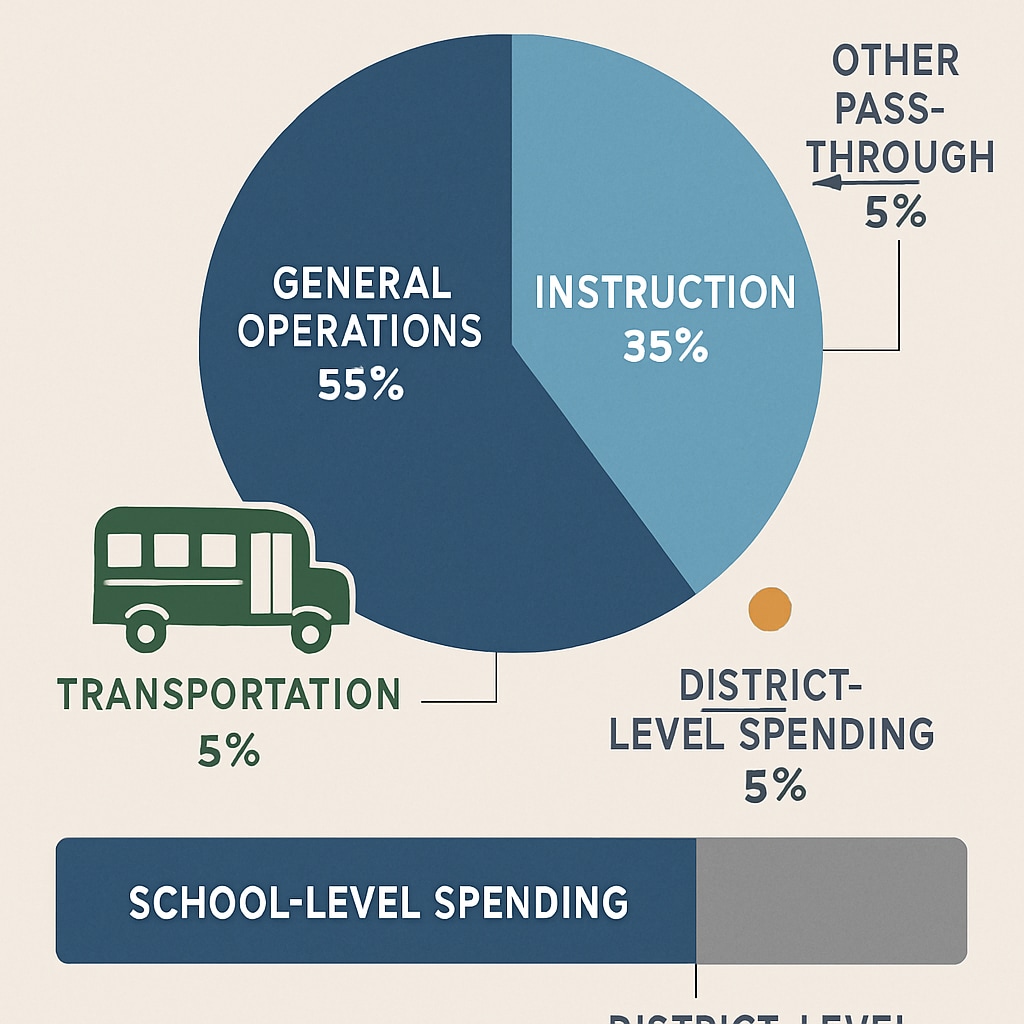The mechanism of pass-through funds (or intermediary fund transfers) has become a controversial topic in school district financing. These funds, while designed to manage specific costs, can inadvertently distort key statistics, such as per-student spending. Using an example of transportation expenditures, this article dives into how pass-through funds affect school budgets, per-student spending metrics, and the broader implications for education funding transparency.

What Are Pass-Through Funds and Their Role in School District Budgets?
Pass-through funds refer to financial resources that are allocated to school districts but are not directly tied to classroom instruction or student-centered activities. Instead, they often cover administrative costs or services provided by third-party vendors. For example, a school district might receive funds earmarked for transportation services, which are then passed through to a private bus company. These funds are included in the district’s overall budget, inflating the apparent per-student spending without directly contributing to classroom resources.
While pass-through funds are not inherently problematic, their inclusion in overall spending statistics can create a misleading picture. Policymakers, parents, and other stakeholders may assume that all reported spending directly benefits students, leading to unrealistic expectations and misplaced criticisms.
How Pass-Through Funds Inflate Per-Student Spending Statistics
Per-student spending is a critical metric used to evaluate the adequacy of school funding and compare districts. However, the inclusion of pass-through funds can artificially inflate these numbers. For instance, consider a district that spends $500,000 annually on transportation services for its students. If this expense is categorized as part of the district’s per-student spending, it may appear as though more funds are being invested in education than is actually the case.
The implications of this are significant:
- Misallocation of Credit: Pass-through funds can give the impression of robust financial support for education, even when those funds do not enhance learning outcomes.
- Skewed Comparisons: Districts with higher pass-through expenditures may appear to outspend others, even if their classroom investments are lower.
- Policy Missteps: Policymakers relying on these inflated metrics may overlook areas in need of additional funding or direct resources inefficiently.

Transportation Costs: A Case Study in Data Distortion
Transportation services are a common example of pass-through funds. Many school districts contract third-party vendors to provide bus services for students. The costs of these services, though essential, do not directly impact classroom learning. Yet, they are often included in per-student spending calculations.
For example, a district with 10,000 students might allocate $1 million annually for bus services. If this cost is included in the per-student spending calculation, it adds $100 per student to the reported figure. While this might seem negligible, when combined with other pass-through expenses, the cumulative effect can be substantial. This not only distorts the financial picture but also complicates efforts to identify areas where additional classroom funding is needed.
Toward Greater Transparency in Education Budgets
The solution to this issue lies in greater transparency and improved accounting practices. School districts and policymakers can adopt the following strategies:
- Separate Accounting: Clearly differentiate between instructional spending and pass-through costs in financial reports.
- Standardized Reporting: Establish uniform guidelines for categorizing and reporting education expenditures to ensure fair comparisons across districts.
- Stakeholder Education: Provide parents, community members, and policymakers with clear explanations of how funds are allocated and used.
- Policy Revisions: Update funding formulas to account for pass-through expenses differently, ensuring a more accurate reflection of direct student investment.
By implementing these measures, school districts can enhance trust and ensure that education budgets are both transparent and effective.
Conclusion: Unveiling the True Cost of Education
Pass-through funds play an important role in school district operations, but their inclusion in per-student spending statistics can obscure the true allocation of educational resources. Addressing this issue requires a collective effort to improve financial reporting practices and increase transparency. By doing so, stakeholders can gain a clearer understanding of where funds are being spent and how they can best support student success.
As we strive for greater transparency in education funding, it is crucial to remember that accurate data is the foundation of informed decision-making. With clearer insights, we can ensure that every dollar invested in education truly benefits the students it is meant to serve.


